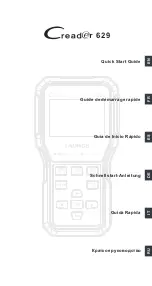
When piano teachers begin teaching in groups, they real-
ize a number of differences between private lessons and
“instructing the masses.” Because of this, many articles
and books have been written to describe effective tech-
niques for class teaching. The following annotated bibli-
ography first appeared in the Winter 2001
Roland Keyboard
Educator.
It is reprinted by permission.
Group piano instruction is currently experiencing a resur-
gence of attention in the United States. The opportunities
for group dynamics and peer interaction make group
study an appealing option for the independent teacher.
Benefits include additional time to spend with the stu-
dents in a group class, incorporating more elements of a
well-rounded musical education in a group setting, and
increased income for the teacher. Group piano is at the
forefront in the field of pedagogy, and the Music Teachers
National Association and Roland Corporation support the
philosophy and tenets of group teaching. MTNA devoted
an entire day of its conference (Pedagogy Saturday March,
1999) to discussions on the topic. Recent articles in key-
board journals and magazines continue to highlight the
changes that continue to occur in the area of group piano.
The purpose of this article is to provide an organized list
of material on the topic of group piano accessible to the
independent teacher. The focus is mainly on materials
published since 1980, although a few older yet still valu-
able sources have been included due to their timeless
nature. We hope that teachers will find in these materials
new ideas and suggestions for group teaching in their
own studios.
Articles
Allen, Alana. “How I Became a Group Piano Teacher.”
Roland Keyboard Educator
Vol. 4, No. 2 (Spring,
2000): pp.4-5.
The shift from teaching privately to heading a studio of nearly 100 stu-
dents organized into groups is addressed in this report. Beginning with
grouping her students into teams of four, the author expanded her facil-
ities, increased her income, and incorporated technology to support her
growing list of interested clients. Her use of Roland technology is high-
lighted, and suggestions for obtaining equipment and using
sequencers and computers in the piano study are offered.
Benedict, Michaele. “Try a New Approach.”
Clavier
Vol.
33, No. 10 (December, 1994): pp.33-34.
With the reduction of arts programs in the schools, group lessons gain
importance as a venue by which a greater number of piano students
can be reached more effectively. Benedict offers thoughts on the value
of extended lesson times, supervised practice sessions, equipment
use, and motivation through a merit system, which can be applied to
the group class.
Bennett, Beulah Varner. “The Group – Ideal for Teaching
Fundamentals.”
Clavier
Vol. 11, No. 10 (December,
1972): pp.38-41.
This article centers on the idea of using the group class as a place to
build a strong musical foundation for the piano student. Due to the time
limitations of the private lesson and the amount of information to be
covered, the teacher may often omit aspects of a comprehensive musi-
cal education that can be incorporated into a longer class period.
These skills include ear training, singing, rhythm drill, orientation of the
keyboard and grand staff, and development of a musical vocabulary of
terms. Each of these areas is isolated and discussed with reference to
appropriate concepts and activities that may be used to strengthen
these specific areas of musical understanding. Ideas show great poten-
tial for use by the independent group piano teacher.
Bianchi, Louise. “For Success: Make Your Program
Match Your Group.”
Piano Quarterly
101 (Spring,
1978): pp.19-22.
This article should be on every group teacher’s “must read” list. The
information is presented in a question/answer format, with the ques-
tions chosen by Bianchi as the most common teacher concerns about
group piano classes. Six areas of concern are met with advice from the
author. The opinions expressed in the answers are honest and helpful,
and explanations are supported by examples from Bianchi’s own expe-
riences.
The opening questions deal with the common concerns of appropriate
grouping and the possible need for periodic regrouping. Bianchi states
her lack of support for regrouping, and instead encourages teachers to
consider restructuring the lessons to meet the needs of the class.
Questions also deal with the frequency of class meetings, preferences
for the combination of group and private lessons, and the most benefi-
cial number of students to have in a piano class. Perhaps the most
informative answer comes to the question, “How long do you continue
with group lessons?” Bianchi answers this with an example from her
teaching experience, which may serve as inspiration to those strug-
gling with the complexities of a class that has been together for a
greater length of time. Numerous reasons are given in this article not
only for using groups in the education of piano students, but also for
continuing those groups in ways that aid the students in becoming
strong, well-rounded musicians.
Burkett, Thomas A. “The Challenge of Group Piano
Teaching and the Rewards.”
Music Educators
Journal
Vol. 69 (November, 1982): pp.31-33.
The various combinations of private and group lessons that may be
used are approached in this article, with specific attention given to
combinations that may work best for the teacher making the transition
Annotated Group Teaching Bibliography
36












































